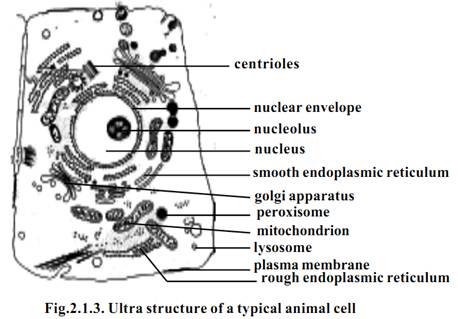


 النبات
النبات
 الحيوان
الحيوان
 الأحياء المجهرية
الأحياء المجهرية
 علم الأمراض
علم الأمراض
 التقانة الإحيائية
التقانة الإحيائية
 التقنية الحيوية المكروبية
التقنية الحيوية المكروبية
 التقنية الحياتية النانوية
التقنية الحياتية النانوية
 علم الأجنة
علم الأجنة
 الأحياء الجزيئي
الأحياء الجزيئي
 علم وظائف الأعضاء
علم وظائف الأعضاء
 الغدد
الغدد
 المضادات الحيوية
المضادات الحيوية|
Read More
Date: 4-11-2015
Date: 4-11-2015
Date: 4-11-2015
|
Cytological Techniques
Cells are transparent and optically homogeneous organizations. They can be observed either directly or after preservation. For direct observation, the specimen needs sufficient contrast. Direct observation is possible by using vital stains.
Vital stains: - Vital dyes or stains are taken up by living cells without killing them. They selectively stain intracellular structures without affecting cellular metabolism and function. For example, Janus green B selectively stains mitochondria, Golgi apparatus, nuclear chromatin in a dividing cell can be stained by methylene blue; Neutral Red dye or Congo red dye can be used to stain yeast cells.
Preserved and stained tissues: - For detailed microscopic study, tissues containing cells are passed through various stages. The stages of cell preparation on a glass slide involve killing, fixation, dehydration, embedding, sectioning, staining and mounting
1- Killing and fixation: - This process causes sudden death of cells or tissues and preserves freshly killed tissues in as lifelike a condition as possible. A good fixative prevents bacterial decay and autolysis. It will also make different cell components more visible and prepare the cell for staining. The commonly used fixatives are Acetic acid. Formaldehyde, Bouin’s solution and Carnoy’s fluid.
2- Dehydration: - In this process water vapours are removed from cells or tissues using chemical agents. It is done by using ethanol and benzene.
3- Embedding: - The tissues are infiltrated with molten paraffin wax. It hardens up on cooling and provides enough support to allow thin sections. Very thin sections need to be taken for electron microscopy. Hence plastics are used for embedding.
4- Sectioning: - The embedding material is cut into thin sections of needed thickness. It is done by using an instrument called microtome.
5- Staining: - The sections are immersed in dyes that stain some structures better than others. For example, cytoplasm stains pink with eosin. Nucleus stains blue with haematoxylin or red with safranin.
6- Dehydration: - Stained sections are immersed in ethanol to remove water. The tissue becomes more transparent. Dehydration is done gradually by using a series of increasing concentrations of ethanol in water. Finally the section is placed in ‘absolute’ alcohol.
7- Mounting: - Cleaned sections are mounted on a slide using a suitable medium like Canada balsam. A cover slip is added and the medium is allowed to dry.

References
T. Sargunam Stephen, Biology (Zoology). First Edition – 2005, Government of Tamilnadu.



|
|
|
|
دراسة يابانية لتقليل مخاطر أمراض المواليد منخفضي الوزن
|
|
|
|
|
|
|
اكتشاف أكبر مرجان في العالم قبالة سواحل جزر سليمان
|
|
|
|
|
|
|
اتحاد كليات الطب الملكية البريطانية يشيد بالمستوى العلمي لطلبة جامعة العميد وبيئتها التعليمية
|
|
|